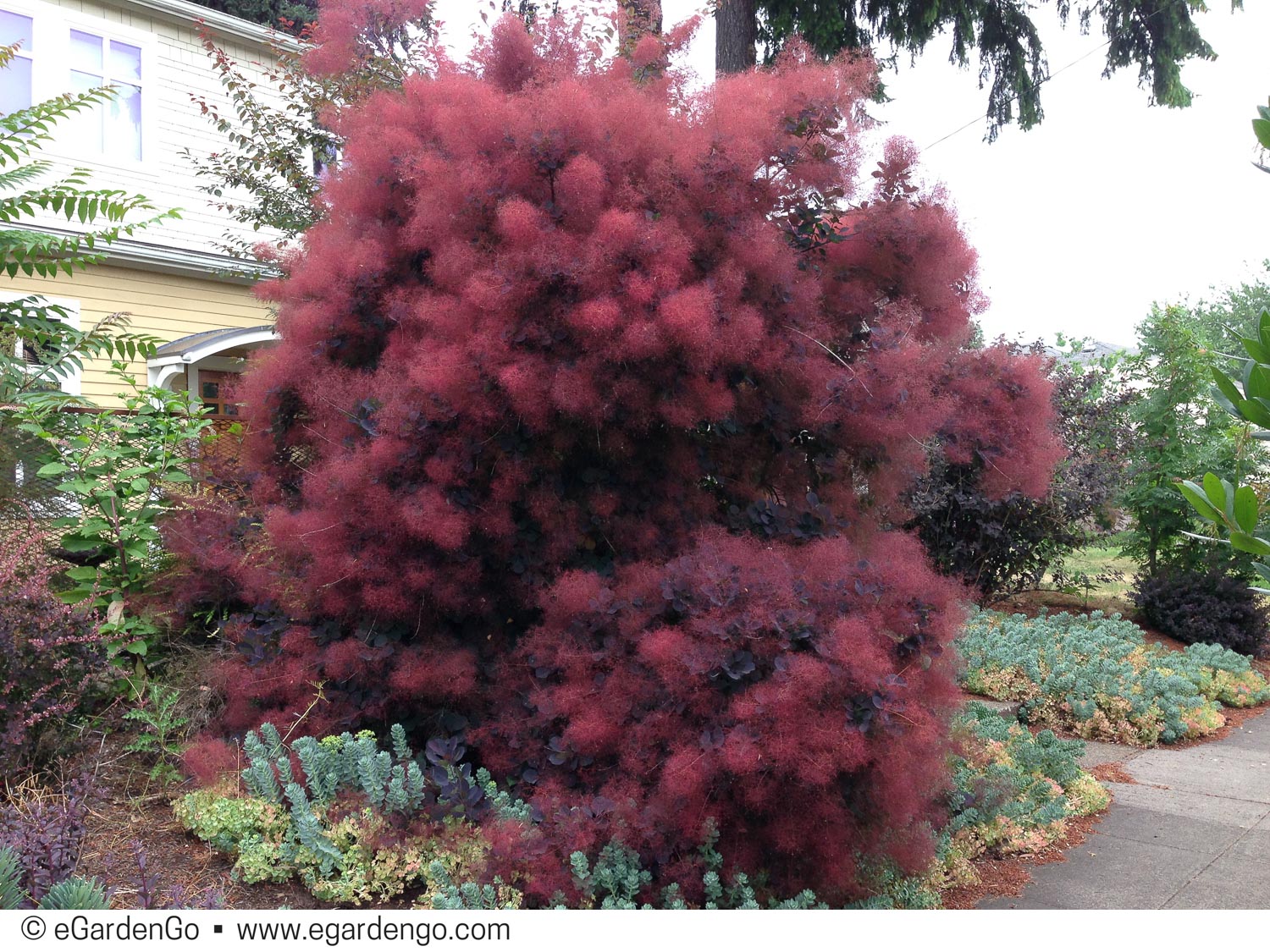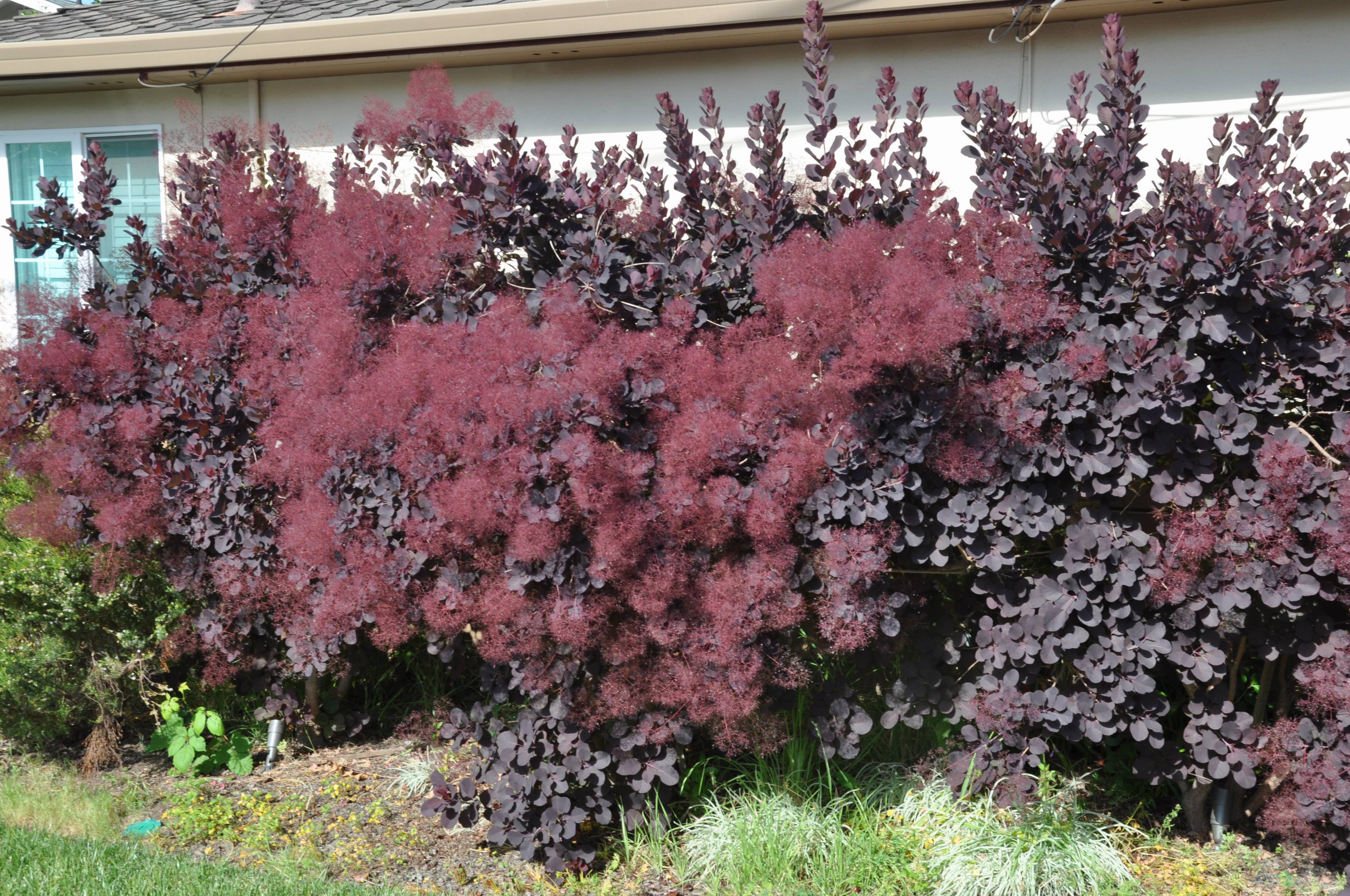Cotinus Royal Purple: The Showstopping Shrub That's
Title: Cotinus Royal Purple: The Show-Stopping Shrub That's Easy to Grow
Introduction:
If you're looking for a show-stopping shrub that's easy to grow, look no further than Cotinus Royal Purple. This stunning plant is known for its deep purple foliage and fluffy, pink flower plumes. It's a great choice for adding color to your garden, and it's also relatively low-maintenance.
Main Content:
Cotinus Royal Purple is a deciduous shrub that can grow up to 10-15 feet tall and wide. It has an upright, open habit, and its leaves are a deep purple color that turns red in the fall. In late spring, the plant produces fluffy, pink flower plumes that resemble smoke. These flowers are not very showy, but they do add a touch of interest to the plant.
Cotinus Royal Purple is a relatively easy plant to grow. It prefers full sun, but it can also tolerate part shade. It's not fussy about soil, but it does best in well-drained soil. Cotinus Royal Purple is drought-tolerant once established, but it's a good idea to water it regularly during the first year after planting.
This plant is relatively pest- and disease-free. However, it can be susceptible to honey fungus, verticillium wilt, and powdery mildew. If you notice any problems, be sure to treat them promptly.
Conclusion:
Cotinus Royal Purple is a beautiful and easy-to-grow shrub that's perfect for adding color to your garden. It's a great choice for borders, hedges, or specimen plantings. If you're looking for a plant that will turn heads, Cotinus Royal Purple is the perfect choice for you.
If you are interested in learning more about cotinus royal purple, I recommend visiting Home Gardening. This website has a wealth of information about the plant, including its care requirements, maintenance tips, and pest and disease control. You can also find photos and videos of the plant in bloom, which will give you a better idea of what it looks like in your garden.
FAQ of cotinus royal purple
What is Cotinus Royal Purple?
Cotinus Royal Purple is a deciduous shrub that is native to Europe and Asia. It is known for its showy, purple foliage and its fluffy, plume-like flowers. Cotinus Royal Purple is a fast-growing shrub that can reach up to 10 feet tall and 6 feet wide. It is hardy in USDA zones 5-8.
How do I care for Cotinus Royal Purple?
Cotinus Royal Purple is a relatively easy-care shrub. It prefers full sun and well-drained soil. It is drought-tolerant once established, but it does benefit from regular watering during the first year after planting. Cotinus Royal Purple does not require a lot of fertilizer, but a light application of compost in the spring will help to promote new growth. Pruning is not required, but it can be done to shape the shrub or to remove dead or damaged branches.
Is Cotinus Royal Purple deer resistant?
Cotinus Royal Purple is not deer resistant. Deer will often eat the leaves of this shrub, especially during the winter months when other food sources are scarce. If you live in an area with deer, you may need to protect your Cotinus Royal Purple with a fence or other barrier.
What are some common pests and diseases of Cotinus Royal Purple?
Cotinus Royal Purple is susceptible to a few common pests and diseases, including:
- Aphids: Aphids are small, sap-sucking insects that can cause the leaves of Cotinus Royal Purple to curl and yellow. They can be controlled with insecticidal soap or neem oil.
- Powdery mildew: Powdery mildew is a fungal disease that can cause the leaves of Cotinus Royal Purple to become covered in a white, powdery film. It can be controlled with a fungicide.
- Rust: Rust is a fungal disease that can cause the leaves of Cotinus Royal Purple to develop orange or brown spots. It can be controlled with a fungicide.
How do I propagate Cotinus Royal Purple?
Cotinus Royal Purple can be propagated by seed, cuttings, or layering. Seed propagation is the most difficult method, but it can be successful if the seeds are fresh. Cutting propagation is the most common method, and it is relatively easy to do. Layering is a simple method that involves bending a branch down to the ground and covering it with soil. The branch will eventually root and form a new plant.
Image of cotinus royal purple
- Cotinus Royal Purple in full bloom. This image shows the beautiful purple foliage of Cotinus Royal Purple in full bloom. The flowers are a delicate pink, and they create a cloud-like effect against the dark leaves.

- Cotinus Royal Purple in fall. This image shows Cotinus Royal Purple in fall, when the leaves turn a brilliant red. The red leaves are a striking contrast to the dark green foliage of other plants in the garden.

- Cotinus Royal Purple as a hedge. This image shows Cotinus Royal Purple used as a hedge. The shrubs are well-spaced and trimmed to create a uniform shape. The purple leaves provide a pop of color against the green lawn.

- Cotinus Royal Purple in a container. This image shows Cotinus Royal Purple growing in a container. The shrub is well-maintained, and the purple leaves are a beautiful contrast to the white planter.

- Cotinus Royal Purple in a mixed border. This image shows Cotinus Royal Purple growing in a mixed border. The shrub is surrounded by other colorful plants, including roses, lavender, and delphiniums.

- Close-up of Cotinus Royal Purple foliage. This image shows a close-up of the foliage of Cotinus Royal Purple. The leaves are a deep purple, and they have a velvety texture.
- Cotinus Royal Purple in the winter. This image shows Cotinus Royal Purple in the winter. The leaves have fallen off, but the branches are still a deep purple. The shrub provides some winter interest in the garden.
- Cotinus Royal Purple as a specimen plant. This image shows Cotinus Royal Purple used as a specimen plant. The shrub is planted in a prominent location in the garden, and it is the focal point of the landscape.

- Cotinus Royal Purple in a woodland garden. This image shows Cotinus Royal Purple growing in a woodland garden. The shrub is surrounded by trees and other shade-loving plants. The purple leaves provide a splash of color in the shady garden.

- Cotinus Royal Purple as a backdrop for flowers. This image shows Cotinus Royal Purple used as a backdrop for flowers. The shrub is planted behind a bed of colorful flowers, and it provides a striking contrast to the blooms.

Post a Comment for "Cotinus Royal Purple: The Showstopping Shrub That's"